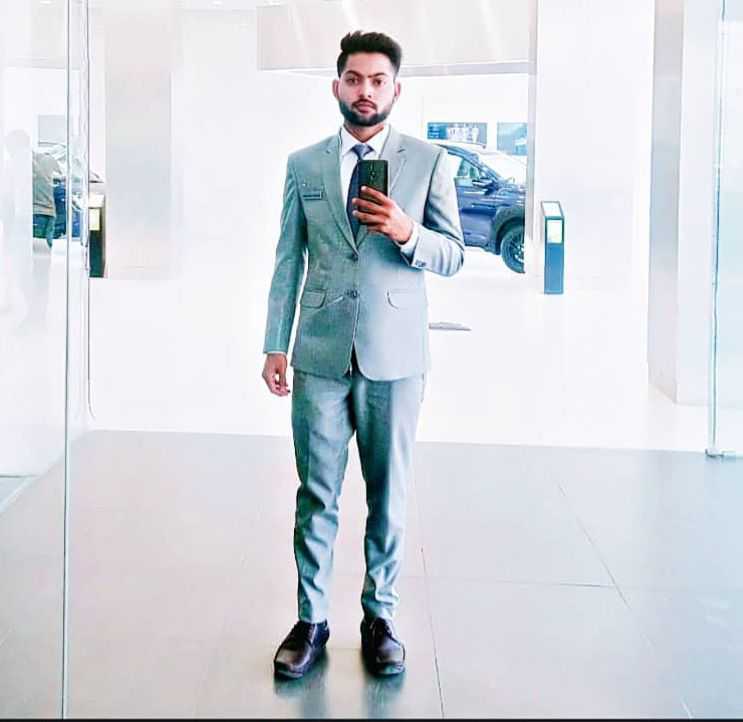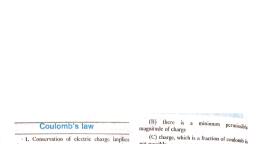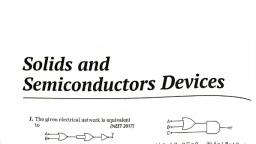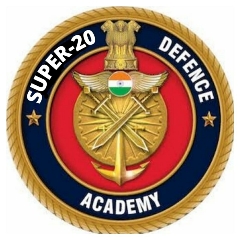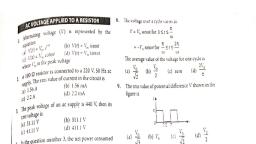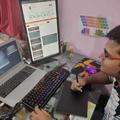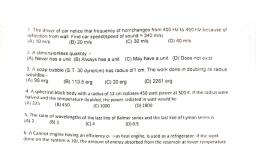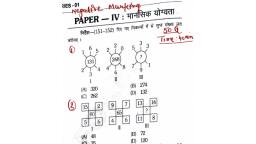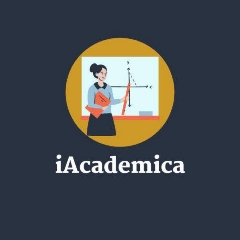Question 1 :
The percentage of {tex} \mathrm { Fe } ^ { + 3 } {/tex} ion present in {tex} \mathrm { Fe } _ { 0.93 } \mathrm { O } _ { 1.00 } {/tex} is
Question 2 :
The number of atoms <img style='object-fit:contain' src="https://storage.googleapis.com/teachmint/question_assets/NEET/5ead480286ab836963762e0f"> contained within a cubic cell is :
Question 3 :
If we mix a pentavalent impurity in a crystal lattice of germanium, what type of semiconductor formation will occur?
Question 4 :
The unit cell of a binary compound of $A$ and $B$ metals has a ccp structure with $A$ atoms occupying the corners and $B$ atoms occupying the centers of each face of the cubic unit cell. If during the crystallization of this alloy, in the unit cell two $A$ atoms are missed, the overall composition per unit cell is:
Question 6 :
The number of hexagonal faces that are present in a truncated octahedron is
Question 8 :
The edge length of a face centred cubic cell of an ionic substance is 508 pm. If the radius of the cation is 110 pm, the radius of the anions is
Question 9 :
In the laboratory, sodium chloride is made by burning sodium in the atmosphere of chlorine. The salt obtained is yellow in colour. The cause of yellow colour is:
Question 10 :
In a face centred cubic lattice the number of nearest neighbours for a given lattice point are :
Question 11 :
$I$. Metallic solids tend to be very brittle.<div>$II$. Metallic bonds are broken quite easily.</div>
Question 12 :
Sodium metal exists in bcc unit cell. The distance between nearest sodium atoms is $0.368\ nm$. The edge length of the unit cell is:
Question 14 :
An ionic compound is expected to have tetrahedral structure if <img style='object-fit:contain' src="https://storage.googleapis.com/teachmint/question_assets/NEET/5ead48a9381c2135355c6d14"> lies in the range of
Question 16 :
In a face centred cubic cell, what is the contribution of an atom at the face-center?
Question 18 :
The phenomenon in which crystals on subjecting to a pressure or mechanical stress produce electricity is called :
Question 21 :
Which is the wrong statement regarding a crystal containing Schottky defect?
Question 22 :
In the rock salt structure, the number of formula units per unit cell is equal to:
Question 24 :
The oxide which shows transition from metal to insulation, <i>i.e</i>., semiconductors are :
Question 25 :
In crystal structure of rock salt <img style='object-fit:contain' src="https://storage.googleapis.com/teachmint/question_assets/NEET/5ead48a9381c2135355c6d15"> , the arrangement of <img style='object-fit:contain' src="https://storage.googleapis.com/teachmint/question_assets/NEET/5ead483041e6ca4117817d30"> ion is :
Question 26 :
The phenomenon in which polar crystals on heating produce electricity is called :
Question 27 :
The three states of matter are solid, liquid and gas, which of the following statements are correct about them?
Question 28 :
Which of the following does not represent a type of crystal system?<br>
Question 29 :
How many number of atoms are there in a cube based unit cell having one atom on each corner and two atoms on each body diagonal of cube
Question 30 :
Among the following types of voids, which one is the largest void?
Question 31 :
Consider the following fcc unit cells choose the correct option<br><img style='object-fit:contain' src="https://storage.googleapis.com/teachmint/question_assets/NEET/5ef6e381f5ca3c63ed733afa"><br>
Question 34 :
In a cubic close packing of spheres in three dimensions, the co-ordination number of each sphere is :
Question 35 :
How many unit cells are present in {tex} 39 \mathrm { g } {/tex} of potassium that crystallises in body centred cubic structure? [At. wt. of {tex} \mathrm { K } = 39 {/tex} ]
Question 38 :
In $CaF_2$ lattice coordination number of $Ca^{+2}$ & $F^-$ is :
Question 40 :
A metallic element crystallises into lattice containing a sequence of layers of <img style='object-fit:contain' src="https://storage.googleapis.com/teachmint/question_assets/NEET/5ead484e86ab836963762e5a"> . Any packing of spheres leaves out void in the lattice. The empty space in percentage by volume in this lattice is :
Question 41 :
Lithium metal crystallises in a body centred cubic crystal. If the length of the side of the unit cell of lithium is 351 pm, the atomic radius of the lithium will be :
Question 43 :
A metal crystallises into a lattice containing a sequence of layers as AB AB AB _______. What percentage of voids are left in the lattice?
Question 44 :
In a crystal some ions are missing from normal sites. This is an example of :
Question 45 :
Number of atoms in the unit cell of Na(bcc type crystal) and Mg(fcc type crystal ) are respectively
